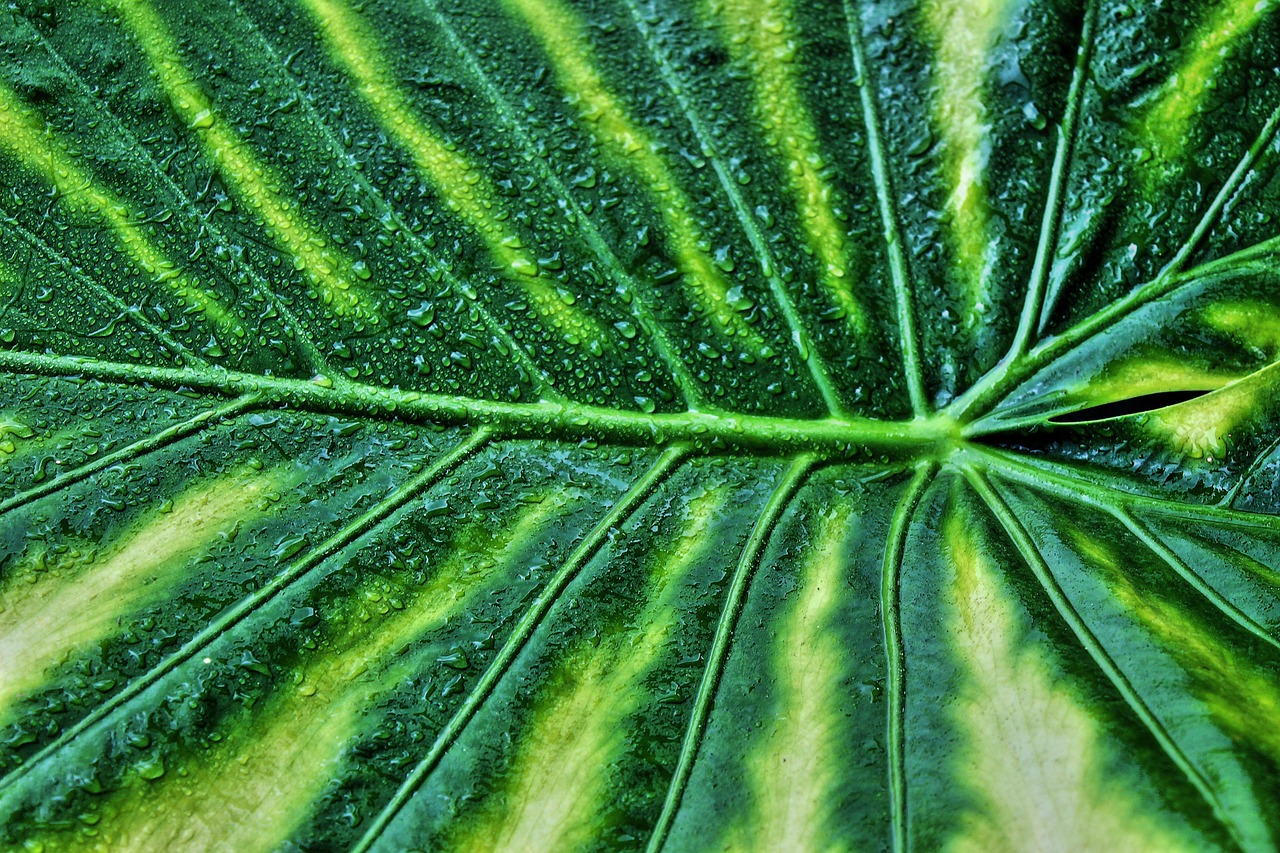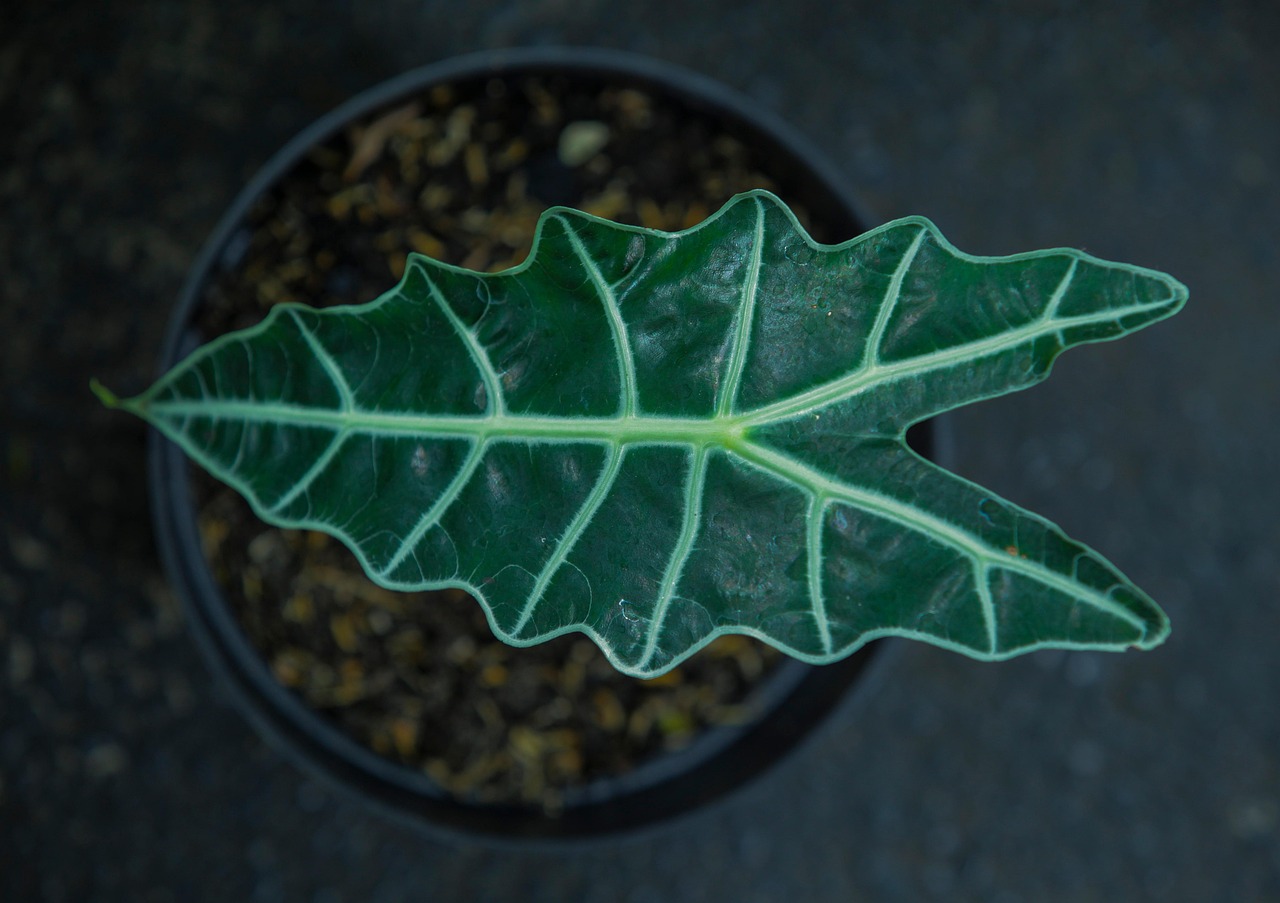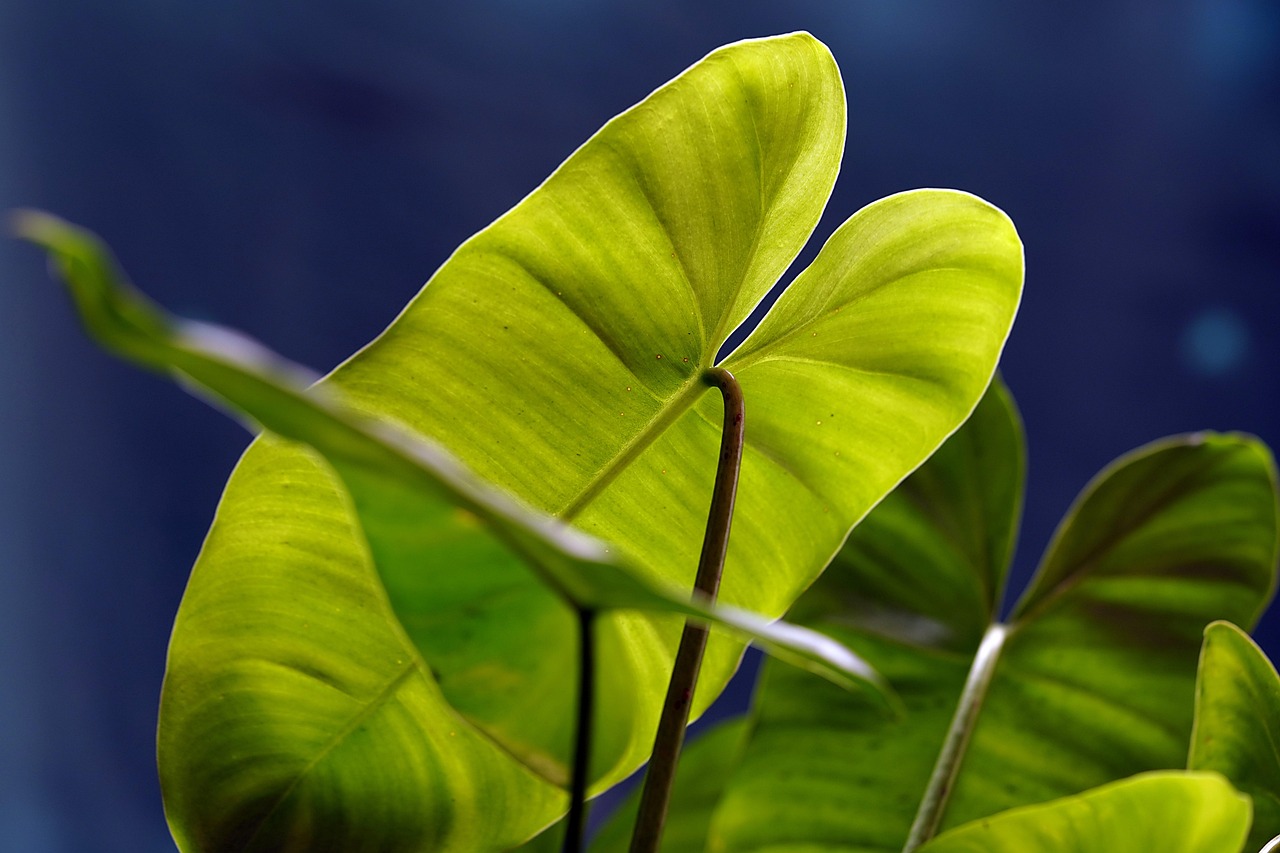Alocasia plants are considered toxic to cats. They contain calcium oxalate crystals, which can cause irritation and discomfort if ingested. It’s essential for pet owners to be aware of this when bringing Alocasia into their homes.
Understanding Alocasia Plants

Alocasia, commonly known as elephant ear plants, are popular houseplants renowned for their striking foliage. These tropical plants originate from Southeast Asia and are cherished for their large, heart-shaped leaves that can add a touch of exotic beauty to any indoor space. However, their aesthetic appeal comes with certain responsibilities, especially for pet owners.
One of the most significant concerns regarding Alocasia plants is their toxicity to pets, particularly cats. With many households featuring furry companions, it’s critical to understand the potential risks associated with keeping these plants indoors. Pet owners should always prioritize the safety of their animals while enjoying the beauty of their plants.
What Makes Alocasia Toxic?
The toxicity of Alocasia plants stems from the presence of calcium oxalate crystals. These needle-like structures can cause irritation to the mouth and throat if ingested. Symptoms may include drooling, vomiting, and difficulty swallowing. While serious complications are rare, it is essential to take immediate action if a cat is suspected of consuming any part of the plant.
It’s also worth noting that different species of Alocasia may have varying levels of toxicity. Some may be more harmful than others, so understanding the specific type you have can provide further insight into its potential risks.
Symptoms of Alocasia Poisoning in Cats
If a cat consumes parts of an Alocasia plant, pet owners should be vigilant for signs of distress. Common symptoms include:
- Drooling: Excessive salivation can indicate oral irritation.
- Vomiting: Cats may vomit as a response to irritation or discomfort.
- Swelling: Swelling of the mouth or throat may occur, leading to difficulty in swallowing.
- Pawing at the mouth: Cats might paw at their mouth in an attempt to relieve irritation.
- Loss of appetite: A cat may refuse to eat due to discomfort.
If any of these symptoms appear after a cat has been near an Alocasia plant, it is advisable to consult a veterinarian promptly for guidance and treatment options.
Safe Alternatives to Alocasia
<pFortunately, there are numerous pet-safe houseplants that can provide similar aesthetic benefits without the associated risks. Some popular options include:
- Spider Plant: Known for its air-purifying qualities, this plant is non-toxic to cats.
- Bamboo Palm: This tropical plant adds a lush feel and is safe for pets.
- Areca Palm: Another pet-friendly option that brings a vibrant touch to interiors.
- Boston Fern: A classic houseplant that is safe for both cats and dogs.
When selecting plants for your home, it is always wise to research their safety around pets. Many resources are available online that provide comprehensive lists of non-toxic plants, helping you make informed choices that benefit both your home decor and your furry friends.
Caring for Alocasia Plants
If you decide to keep an Alocasia plant in your home, proper care is essential. Here are some tips on maintaining the health and vibrancy of your plant:
- Light: Alocasia prefers bright, indirect sunlight. Direct sunlight can scorch the leaves.
- Watering: Keep the soil consistently moist but not soggy. Allow the top inch of soil to dry out between waterings.
- Humidity: These plants thrive in high humidity. Consider using a humidifier or misting the leaves regularly.
- Fertilization: Feed your Alocasia with a balanced fertilizer during the growing season (spring and summer).
By following these care tips, you can help ensure that your Alocasia remains healthy and lush while keeping safety in mind for your pets.
Identifying Alocasia Species
Alocasia plants encompass a wide variety of species, each with unique characteristics. Understanding the specific type of Alocasia you have can be beneficial for both care and safety regarding pets. Here are some common species:
- Alocasia macrorrhiza: Also known as giant taro, this species features large, arrow-shaped leaves and can grow quite tall. It is often used in landscaping.
- Alocasia amazonica: This species is smaller and more compact. It has striking dark green leaves with prominent white veins, making it a popular choice for indoor settings.
- Alocasia zebrina: Known for its distinctive zebra-striped stems, this plant stands out with its unique appearance and can grow up to 3 feet tall.
- Alocasia frydek: This smaller variety showcases velvety, dark green leaves with prominent white veins. It is an attractive option for indoor gardening.
Each species may have different care requirements and toxicity levels, so it’s important to familiarize yourself with the specific type you own. This knowledge can also help you in identifying symptoms of potential poisoning in your pets.
Preventing Accidental Ingestion
Given that Alocasia plants are toxic to cats, taking preventative measures is essential for pet owners. Here are some strategies to minimize the risk of accidental ingestion:
- Placement: Keep Alocasia plants out of reach of curious cats. Placing them on high shelves or in rooms that are off-limits to pets can help prevent access.
- Training: Train your cat to avoid the area where the plant is located. Use commands or deterrent sprays to discourage them from approaching the plant.
- Distraction: Provide alternative sources of entertainment. Offering cat-friendly toys and scratching posts can help divert their attention away from plants.
- Monitoring: Regularly observe your cat’s behavior around houseplants. If you notice any unusual interest in the Alocasia, consider relocating it immediately.
By implementing these strategies, you can create a safer environment for your pets while still enjoying the beauty of Alocasia plants in your home.
What to Do If Your Cat Ingests Alocasia
If you suspect that your cat has ingested any part of an Alocasia plant, it’s crucial to act quickly. Here is a step-by-step guide on what to do:
- Stay Calm: It is important to remain calm so you can effectively assist your pet.
- Assess Symptoms: Monitor your cat for any symptoms of distress or discomfort. Take note of any signs such as drooling, vomiting, or pawing at the mouth.
- Contact a Veterinarian: Call your veterinarian immediately for advice. They may ask questions about the amount ingested and the symptoms observed.
- Follow Instructions: Follow the veterinarian’s instructions carefully. They may recommend bringing your cat in for an examination or suggest home care based on the severity of the situation.
Swift action can make a significant difference in the outcome if your cat has ingested a toxic substance. Always keep emergency contact information for your veterinarian readily available.
Recognizing Safe Plants for Your Home
To create a pet-friendly environment, consider incorporating various safe houseplants alongside your Alocasia, if you choose to keep one. Here are some non-toxic plants that are great alternatives:
- Ponytail Palm: A unique and resilient plant that requires minimal care.
- Prayer Plant: Known for its beautiful foliage and pet-safe qualities.
- Calathea: These plants are not only safe for cats but also offer stunning leaf patterns.
- Pilea Peperomioides: Also known as the Chinese Money Plant, it’s easy to care for and safe around pets.
Incorporating safe plants into your home not only enhances aesthetics but also ensures a healthy living space for both you and your pets.
Caring for Cats in a Plant-Filled Home
If you have a variety of houseplants, including potentially toxic ones like Alocasia, it’s essential to ensure that your cats remain healthy and safe. Here are some tips for caring for cats in a plant-filled home:
- Create Boundaries: Designate certain areas of your home as pet-free zones where plants are kept.
- Regularly Clean Up: Keep areas free of fallen leaves or debris from plants that could attract cats.
- Educate Yourself: Learn about which plants are safe and which are toxic to ensure you make informed decisions.
Caring for both plants and pets requires diligence, but with proper management, you can achieve a harmonious balance in your home.
Co

mmon Myths About Alocasia and Cats
When it comes to houseplants and pets, several myths can lead to misunderstandings. Here, we address some common misconceptions about Alocasia plants and their safety for cats.
Myth 1: All Houseplants Are Safe for Cats
This myth suggests that all plants found in homes are non-toxic to pets. In reality, many popular houseplants, including various species of Alocasia, can be harmful. It is crucial to research each plant before bringing it into a home with cats.
Myth 2: Alocasia Plants Are Only Mildly Toxic
While the symptoms of Alocasia poisoning may not always be severe, the toxicity is not to be underestimated. The calcium oxalate crystals can cause significant irritation and discomfort. Even if symptoms appear mild, it is essential to consult a veterinarian.
Myth 3: Cats Won’t Eat Toxic Plants
Many cat owners believe their pets will instinctively avoid toxic plants. However, curious cats may nibble on plants out of curiosity or boredom. It is important to take proactive measures to prevent any potential ingestion.
Creating a Pet-Safe Indoor Environment
To ensure a safe indoor environment for both your pets and your plants, consider implementing the following strategies:
- Plant Placement: Arrange plants in locations that are less accessible to your cat. High shelves or hanging planters can help keep toxic plants out of reach.
- Use Deterrents: Employ pet-safe deterrent sprays or natural repellents around plants to discourage cats from approaching.
- Provide Alternatives: Introduce cat grass or catnip as safe alternatives for your cat to chew on. This can satisfy their urge to nibble on greenery without the risks associated with toxic plants.
- Regular Monitoring: Keep a close eye on your cat’s behavior around plants. If they show interest in a particular plant, consider moving it elsewhere.
By creating a pet-safe environment, you can enjoy the beauty of your Alocasia plants while keeping your furry friends protected.
Signs of Plant Poisoning in Pets
Recognizing the signs of poisoning in pets is crucial for prompt treatment. Here are key symptoms to watch for if you suspect your cat has ingested an Alocasia plant:
- Excessive Drooling: This is often one of the first signs of irritation in the mouth.
- Vomiting: Cats may vomit as a reaction to ingesting toxic substances.
- Lack of Appetite: A cat that feels unwell may refuse to eat or drink.
- Pawing at the Mouth: This behavior can indicate discomfort or irritation.
- Swelling or Inflammation: Look for swelling around the mouth or throat area.
If you notice any of these symptoms after your cat has been near an Alocasia plant, contact your veterinarian immediately for guidance.
Emergency Preparedness for Pet Owners
As a responsible pet owner, being prepared for emergencies involving plant toxicity is vital. Here are steps you can take:
- Keep Emergency Contacts Handy: Have the contact information for your veterinarian and a local animal poison control center readily available.
- Create a First Aid Kit: Assemble a pet first aid kit containing essential items like gauze, antiseptic wipes, and any medications your pet may need.
- Educate Family Members: Ensure that everyone in your household understands which plants are toxic and how to respond in case of an emergency.
- Stay Informed: Regularly update yourself on new information regarding plant toxicity and pet safety.
A proactive approach can significantly enhance your ability to respond effectively should any issues arise with your cat and houseplants.
The Role of Veterinary Care
Your

veterinarian plays a crucial role in ensuring the health and safety of your pets. Regular check-ups can help monitor your cat’s overall health and catch any potential issues early. Here are ways your vet can assist you:
- Health Assessments: Regular examinations can help identify health problems before they become serious.
- Toxicity Guidance: Your veterinarian can provide information on plant toxicity and recommend safe alternatives for your home.
- Emergency Care: In case of ingestion, your vet can offer specialized care for poisoned pets, including treatments that may alleviate symptoms.
- Nutritional Advice: A vet can suggest dietary adjustments that may keep your pet healthy and satisfied without the need to chew on houseplants.
Maintaining a strong relationship with your veterinarian ensures that you have the support you need for both your pets and your plants in your home.
Staying Informed About Plant Safety
As a pet owner, staying informed about the plants in your home is essential for ensuring a safe environment for your cats. Regularly updating your knowledge about plant toxicity can help you make better decisions when choosing new houseplants. Numerous resources are available, including veterinary websites, pet safety organizations, and botanical guides. These can provide valuable insights into which plants are safe for pets and which to avoid.
Additionally, being aware of local plant shops that specialize in pet-safe plants can be beneficial. Many nurseries now label their plants according to toxicity levels, making it easier for pet owners to select suitable options. Engaging with local gardening communities or online forums can also help you learn from fellow plant enthusiasts about safe practices and experiences.
Creating a Pet-Friendly Garden
If you enjoy gardening outdoors, consider creating a pet-friendly garden. This space can feature a variety of plants that are safe for cats while still being visually appealing. Here are some plants that you might consider for an outdoor garden that will not pose a risk to your pets:
- Cat Grass: A popular choice for many cat owners, cat grass is safe and enjoyable for cats to munch on.
- Marigolds: These flowers are non-toxic and can add vibrant color to your garden.
- Sunflowers: Tall and bright, sunflowers are safe for pets and can attract birds and pollinators.
- Petunias: Colorful and fragrant, petunias are another safe option for gardens shared with pets.
By selecting non-toxic plants for your outdoor space, you can create a beautiful garden that both you and your pets can enjoy without worry.
Understanding Your Cat’s Behavior
Cats

are naturally curious creatures, and their behavior can sometimes lead them to explore plants more than you might expect. Understanding their motivations can help you create a safer environment. For instance:
- Playfulness: Cats often see plants as toys. They may bat at leaves or dig in the soil out of curiosity.
- Instinct: Some cats have a natural instinct to chew on grass or greens, which may stem from their wild ancestors.
- Boredom: Cats may engage with plants if they lack stimulation. Providing interactive toys or climbing structures can help alleviate boredom.
Observing your cat’s behavior and adjusting your environment accordingly can significantly reduce the chances of them interacting with toxic plants like Alocasia.
Final Thoughts
Owning Alocasia plants while having cats requires careful consideration and proactive measures. Understanding the toxicity of these plants is essential to protect your feline friends. By creating a pet-safe environment, educating yourself about plant care, and recognizing the signs of poisoning, you can enjoy the beauty of Alocasia without compromising your cat’s health.
The relationship between pets and plants can be harmonious with the right knowledge and precautions. Always seek out safe alternatives to toxic plants and work closely with your veterinarian to ensure the well-being of your pets. A little research and preparation can go a long way in fostering a safe home filled with greenery that both you and your cats can appreciate.
By prioritizing safety while enjoying your love for plants, you create a nurturing atmosphere where both your pets and your plants can thrive together.
